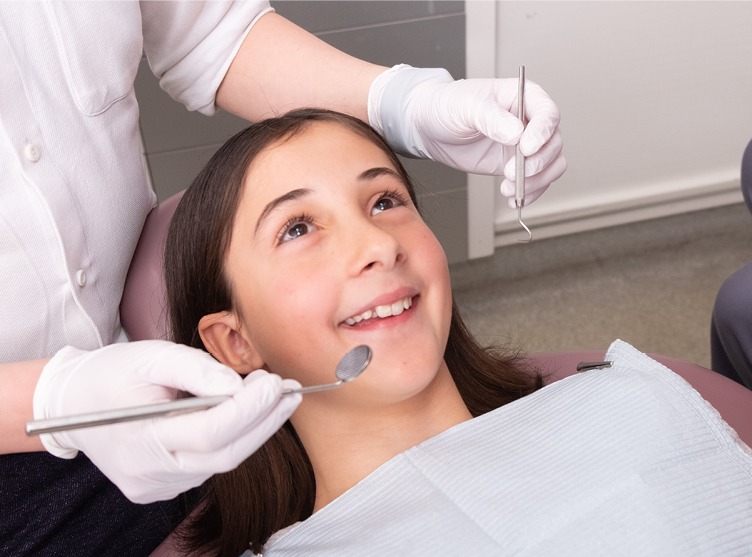A Biased View of Legacy Orthodontics
Wiki Article
The Ultimate Guide To Legacy Orthodontics
Table of ContentsExcitement About Legacy OrthodonticsThe Single Strategy To Use For Legacy OrthodonticsNot known Factual Statements About Legacy Orthodontics Legacy Orthodontics Fundamentals ExplainedThe Ultimate Guide To Legacy Orthodontics
At Advanced Orthodontics, we give people with a all natural therapy experience. Furthermore, we supply adjustable treatment routines, versatile settlement options and an enjoyable, enjoyable experience. clear braces. Call ( 480) 357-4900 today to find out more and schedule a consultation.An orthodontist is a dentist educated to diagnose, prevent, and treat teeth and jaw abnormalities. They remedy existing problems and are trained to recognize problems that may establish in the future. Orthodontists work with people of any ages, from children to adults. Individuals frequently associate an excellent smile with healthiness.
Malocclusion, or misaligned teeth, can lead to dental concerns, consisting of tooth decay, gum disease, and challenging or excruciating eating. However not every person is birthed with straight teeth. If you have a negative bite or big spaces between your teeth, you may wish to consult a dental professional specializing in orthodontic treatment.
The Of Legacy Orthodontics
( Photo Credit History: DigitalVision/Getty Images) Orthodontists use dealt with and removable dental devices, like braces, retainers, and bands, to transform the setting of teeth in your mouth. Orthodontic therapy is for dental abnormalities, including: Crooked teethBite issues, like an overbite or an underbiteCrowded teeth or teeth that are too far apartJaw misalignmentThe objective of orthodontic therapy is to enhance your bite.While you could believe of orthodontists as generally for children or teens that need braces, they can deal with dental issues at any type of age. Orthodontists go to university, oral institution, and orthodontic institution.
All orthodontists are dental experts, but not all dental professionals are orthodontists. Orthodontic residency programs offer intensive, focused direction for oral specialists. They concentrate on 2 locations: How to effectively and safely relocate teeth Exactly how to appropriately assist development in the teeth, jaw, and faceOnce an orthodontist has finished training, they have the alternative to become board accredited.
Get This Report about Legacy Orthodontics
Misalignment, or malocclusion, is one of the most usual factor people see an orthodontist. It is hereditary and is the outcome of size distinctions in between the upper and lower jaw or in between the jaw and teeth. Malocclusion results in tooth overcrowding, a twisted jaw, or irregular bite patterns. Malocclusion is usually treated with: Your orthodontist attaches steel, ceramic, or plastic square bonds to your teeth.If you have only small malocclusion, you might have the ability to use clear dental braces, called aligners, rather of traditional braces (https://padlet.com/brianmccune20176/legacy-orthodontics-oaq8ob5ieez4famy). Some people require a headwear to aid move teeth into line with stress from outside the mouth. After dental braces or aligners, you'll require to put on a retainer. A retainer is a custom-made tool that maintains your teeth in area.
They can create extra space in the mouth without having to pull teeth. Orthodontists use wires, surgical screws, or plates to support your jaw bone.
You may require to see an orthodontist if you have: Crowding or not adequate area for all of your teethOverbite, when your top teeth come over your base teethUnderbite, when your base teeth are as well far forwardSpacing or concerns with gapsCrossbite, which is when your top teeth fit behind your base teeth when your mouth is closedOpen bite or a vertical gap in between your front bottom and upper teethMisplaced midline, when the center of your base and upper teeth don't line up Remedying a dental malocclusion can: Make biting, eating, and speaking easierImprove the balance of our face and your overall appearanceEase discomfort from temporomandibular joint disordersDifferent your teeth and make them much easier to cleanse, aiding protect against tooth degeneration or dental caries It's typically a dental expert who initially notifications misaligned teeth throughout a routine test.
Some Known Questions About Legacy Orthodontics.

During your first orthodontic appointment, you'll likely have: A dental examPhotos taken of your face and smileDental X-raysPanoramic (360 level) X-rays of your face and headImpressions to develop molds of your teethThese tests will help your orthodontist understand how to wage your therapy. leesburg orthodontics. An orthodontist is a dental practitioner that's had training to right here treat your teeth and jaw
Orthodontists may execute surgical procedure, exams,X-rays,and more to aid you obtain a more comfy, much healthier smile. An orthodontist is concentrated on your bite, so something like a broken tooth would certainly be managed by a dental expert. Orthodontists are dental professionals but not all dental practitioners are orthodontists. Orthodontists are focused on your bite, or the way your teeth fit together, and the straightness of your teeth. Ever asked yourself exactly how celebs constantly seem to have perfectly straightened teeth? Orthodontists are dental specialists that focus on fixing irregularities in the teeth and jaws.
The 6-Second Trick For Legacy Orthodontics

While braces are one of the most commonly recognized orthodontic therapy, orthodontists have a diverse toolkit at their disposal. The details approach selected depends upon the seriousness of the instance, the individual's age, and individual choices. These tried-and-true braces use a system of braces bonded to the teeth and linked by cables.
These removable trays are personalized to gradually move the teeth's setting. In instances of narrow jaws, palatal expanders can be used to create space for appropriate tooth positioning.
Report this wiki page